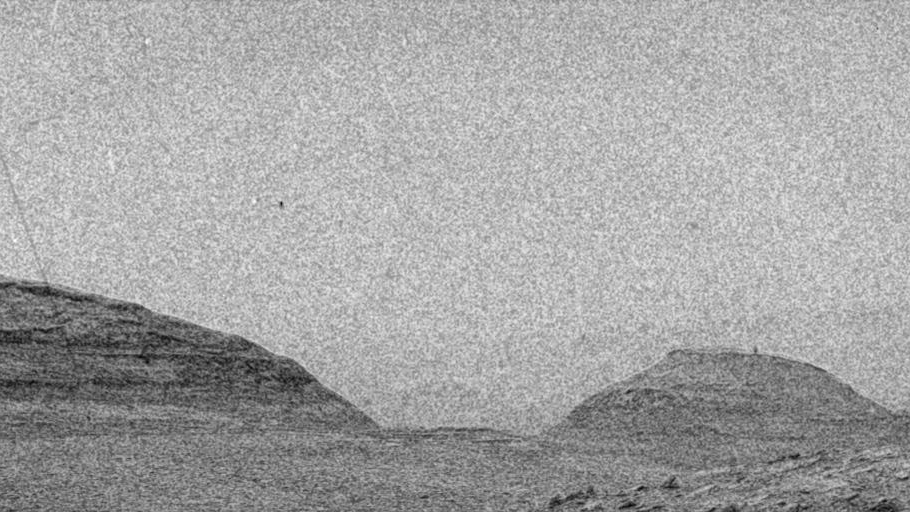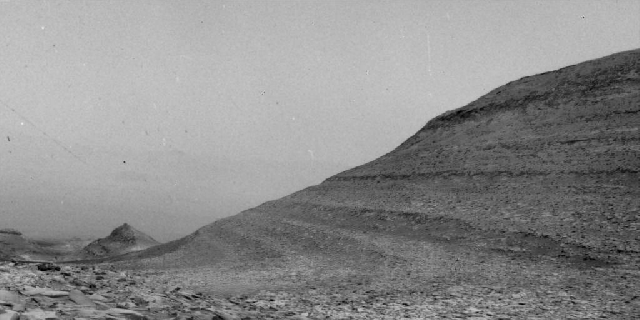Remember the northern lights last month? See how that solar storm impacted Mars’ surface
Earth has been treated to a handful of dazzling light shows in the skies recently, including last month's display of the northern lights viewable not only from most states in the U.S. but across the globe.
These colorful phenomena are caused by solar storms, a result of increased activity from the sun, and do more than produce a spectacle for us Earthlings to enjoy − they also impact other planets in the solar system like Mars, which received a major dusting of radiation.
Over the past month, according to NASA, Mars rovers and orbiters have captured some dazzling phenomena after the sun entered its peak period of activity called solar maximum. Cameras positioned on the planet have even captured auroras on Mars, along with solar flares and coronal mass ejections.

Solar flares and the northern lights: How the sun's cycle changes colors in the sky
The information gathered by NASA and the European Space Agency via tools like the Curiosity Mars rover and the Solar Orbiter spacecraft found that solar activity launched not only charged particles from the sun to the red planet but X-rays and gamma rays as well.
This information is important for the future of space travel, said NASA, as it can reveal how much radiation exposure the first astronauts on Mars may encounter. In the case of the X12 solar flare on May 20, radiation reached the Curiosity rover at a rate that would have delivered an 8,1000 microgray dose to any humans standing nearby, or the equivalent of 30 chest X-rays.

NASA said this dose is not deadly to humans but is the largest surge measured by Curiosity since the rover landed in 2012.
“This was the largest solar energetic particle event that MAVEN has ever seen,” said Christina Lee, NASA’s Mars Atmosphere and Volatile EvolutioN orbiter (MAVEN) Space Weather Lead, in a press statement. “There have been several solar events in past weeks, so we were seeing wave after wave of particles hitting Mars.”
Cameras capture solar storm on Mars, help prepare astronauts for future trips
Images and videos captured by Curiosity during the May storm look almost "snowy" in appearance, like the static you might expect from a poor signal on a rabbit-ear television. In reality, these snowy bits of static are the observable result of charged particles hitting the camera.
The charges that hit the planet were so significant that they managed to disrupt some equipment, like the cameras on the Mars Odyssey that were knocked out for roughly an hour. The impact of the flare on Mars' environment, and specifically the heavy dusting of radiation created in the planet's thin atmosphere, has led scientists to consider potential safety measures to enable future human missions.
“Cliffsides or lava tubes would provide additional shielding for an astronaut from such an event," said Don Hassler, RAD’s principal investigator of the Southwest Research Institute’s Solar System Science and Exploration Division, in a press statement. "In Mars orbit or deep space, the dose rate would be significantly more."
MAVEN was also able to capture a Martin aurora show similar to the one seen on Earth − though the presence of auroras on Mars has a different implication than here on Earth, where a robust magnetic field protects us.
That field generally keeps aurora activity to the regions near the Earth's poles, whereas Mars lost its magnetic field long, long ago. When energized particles hit that Martian atmosphere, the auroras are not controlled and instead engulf the entirety of the planet, producing conditions on the planet that are rather different from our own.
While a potential trip to Mars is still a few years off, this solar activity will continue to not only produce colorful viewing from Earth, but invaluable information that will color scientists understanding of other planets in our solar system.
“I wouldn’t be surprised if this active region on the sun continues to erupt, meaning even more solar storms at both Earth and Mars over the coming weeks," said Hassler.
This article originally appeared on USA TODAY: A solar storm triggered northern lights on Earth: See how it hit Mars

